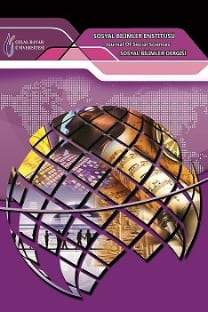YAZILI METİNDEN SÖZLÜ ÇEVİRİ SÜRECİNDE KARŞILAŞILAN SORUNLAR ÜZERİNE BİR ARAŞTIRMA
Bu deneysel araştırmada anadil (Türkçe)’den yabancı dile (İngilizce) yazılı metinden sözlü çeviri yaparken karşılaşılan sorunlar ve bunların sebepleri incelenmiştir. Çalışmada dokuz adet 2.sınıf öğrencisinin çevirileri anlama sadık olma, kaynak iletinin amacı, ifade, sözdizim ve dilbilgisinin doğru kullanımı, belirli bağlama ait art alan bilgisi ve sorun çözme becerileri gözönüne alınarak değerlendirilmiştir. Araştırma sonuçlarına göre, kaliteli çeviriler üretebilmek için öğrencilerin farkındalık kazanmaları ve bilişsel becerileri içselleştirip, yapıcı motivasyon ve algı kontrolünü sağlamaları çok önem teşkil etmektedir.
Anahtar Kelimeler:
Yazılı metinden sözlü çeviri, Çeviride kalite, Bilişsel Süreçler, Sözlü çevirmen eğitimi, Çaba modelleri.
A STUDY ON THE PROBLEMS ENCOUNTERED IN SIGHT TRANSLATION
This experimental research presents the problems and their underlying reasons in sight translation from one’s native language (Turkish) into a foreign language (English). The study analyzes the performances of nine sophomore students, as regards faithfulness to meaning and the purpose of the source message, proper use of expression, grammar and syntax, background knowledge about the specified context and problem solving skills. Results reveal that to produce high-quality translations, students’ awareness and internalization of cognitive skills and constructive control of perceptions and motivations is necessarily significant.
Keywords:
Sight translation, Quality in translation, Cognitive processing, Interpreter training, Effort Models.,
___
- AGRIFOGLIO, Marjorie (2004), “Sight Translation and Interpreting: A Comparative Analysis of Constraints and Failures”, Interpreting 6: 1. John Benjamins, Amsterdam, s.43-67.
- CHAFE, Wallace; Danielewicz Jane (1987), “Properties of Spoken and Written Language”, Comprenhending Oral and Written Language (R.Horowitz & F.J.Samuels eds.), Academic Press, New York.
- GILE, Daniel (2009), Basic Concepts and Models for Interpreter and Translator Training, John Benjamins, Amsterdam. IVARS, Amparo Jimenez (2008), “Sight Translation and Written
- Translation: A Comparative Analysis of Causes of Problems, Strategies and Translation Errors within the PACTE Translation Competence Model”, FORUM-International Journal of Interpretation and Translation 6, St. Jerome, Manchester, s.79-104.
- LACRUZ, Isabel; Gregory M.Shreve (2010), “Cognitive Effort, Syntactic Disruption and Visual Interference in a Sight Translation Task”, Translation and Cognition (Gregory M.Shreve & Erik Angelone eds.), John Benjamins, Amsterdam, s. 63-84.
- McTEAR, Michael F. (2004), Spoken Dialogue Technology: Toward the Conversational User Interface, Springer, London.
- MIKKELSON, Holly. “Introduction to the Sight Translation Chapter (from The Interpreter’s Edge, Third Edition)”. http://www.acebo.com/sintro.html. (accessed May 27, 2013).
- SAMPAIO, Gloria Regina Loreto (2007), “Mastering Sight Translation Skills”, Tradução & Comunicação Vol. 16, Centro Universitario Anhanguera de Sao Paulo, s. 63–69.
- SAWYER, David (2004), Fundamental Aspects of Interpreter Education: Curriculum and Assessment, John Benjamins, Philadelphia. VIEZZI, Maurizio (1989), “Information Retention as a Parameter for the Comparison of Sight Translation and Simultaneous Interpretation: An Experimental Study” in The Interpreter’s Newletter 2. University of Trieste. s. 65-69.
- WENNERSTROM, Ann (2001), The Music of Everyday Speech: Prosody and Discourse Analysis, Oxford University Press, New York. “Türkiye‟nin Avrupa Müktesebatına Uyum Programı”
- http://www.mfa.gov.tr/bn-6-17-nisan-2007-turkiye-nin-ab-muktesebatinauyum-programi-hk.tr.mfa (accessed November 30, 2011).
- ISSN: 1304-4796
- Yayın Aralığı: Yılda 4 Sayı
- Başlangıç: 2003
- Yayıncı: Manisa Celal Bayar Üniversitesi
Sayıdaki Diğer Makaleler
YENİ TÜRK EDEBİYATINDA MERSİYEYE GENEL BİR BAKIŞ
KURUMSAL YÖNETİM VE EĞİTİM-ÖĞRETİM AÇISINDAN PAKİSTAN’DA MEDRESE GERÇEĞİ
Yrd. Doç. Dr. M. Nur PAKDEMİRLİ
SİNEMADA TASARIM VE NESNELERİN ESTETİĞİ “Modern Anlatı Ekseninde Göstergebilimin Tasarıma Etkisi”
ELİF ŞAFAK’IN “MAHREM”İNDE FANTASTİK BİR YOLCULUK
16. YÜZYILDAKİ BAZI DİVAN ŞAİRLERİNİN TÜRKÇE DİVANLARINDA GÜL VE ANLAM İLGİLERİ
Prof. Dr. Kenan ERDOĞAN, Serpil AKGÜL
AHMET HÂŞİM VE BÂKİ AYHAN T.’NİN BİRER ŞİİRİNDEN HAREKETLE YÜZ YILDA MODERNİZME ELEŞTİREL BİR BAKIŞ
AŞK MESNEVİLERİNDE OYUN VE EĞLENCENİN KURGUSAL İŞLEVİ
MİLLİ KÜTÜPHANEDE BULUNAN 06 MİL YZ A 1793 NUMARALI ŞİİR MECMUASI ÜZERİNE
YAZILI METİNDEN SÖZLÜ ÇEVİRİ SÜRECİNDE KARŞILAŞILAN SORUNLAR ÜZERİNE BİR ARAŞTIRMA
